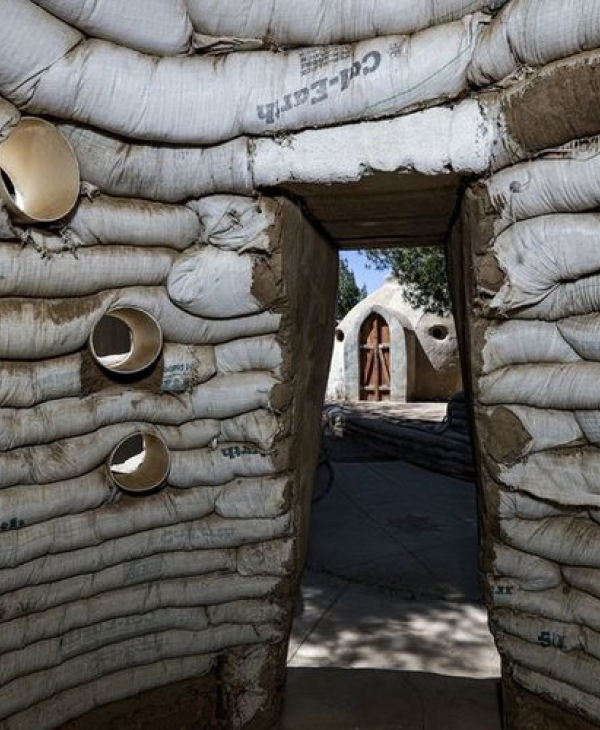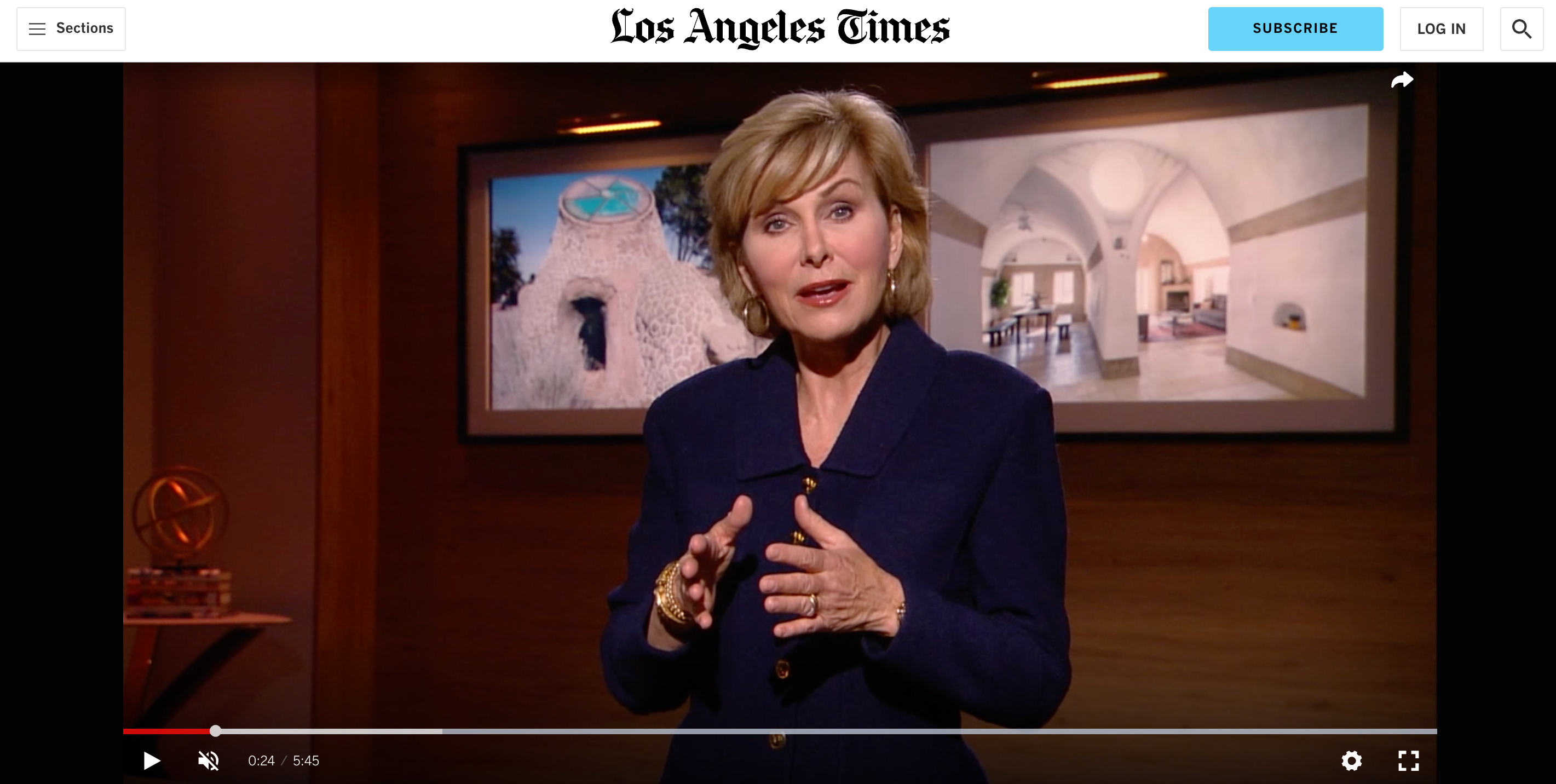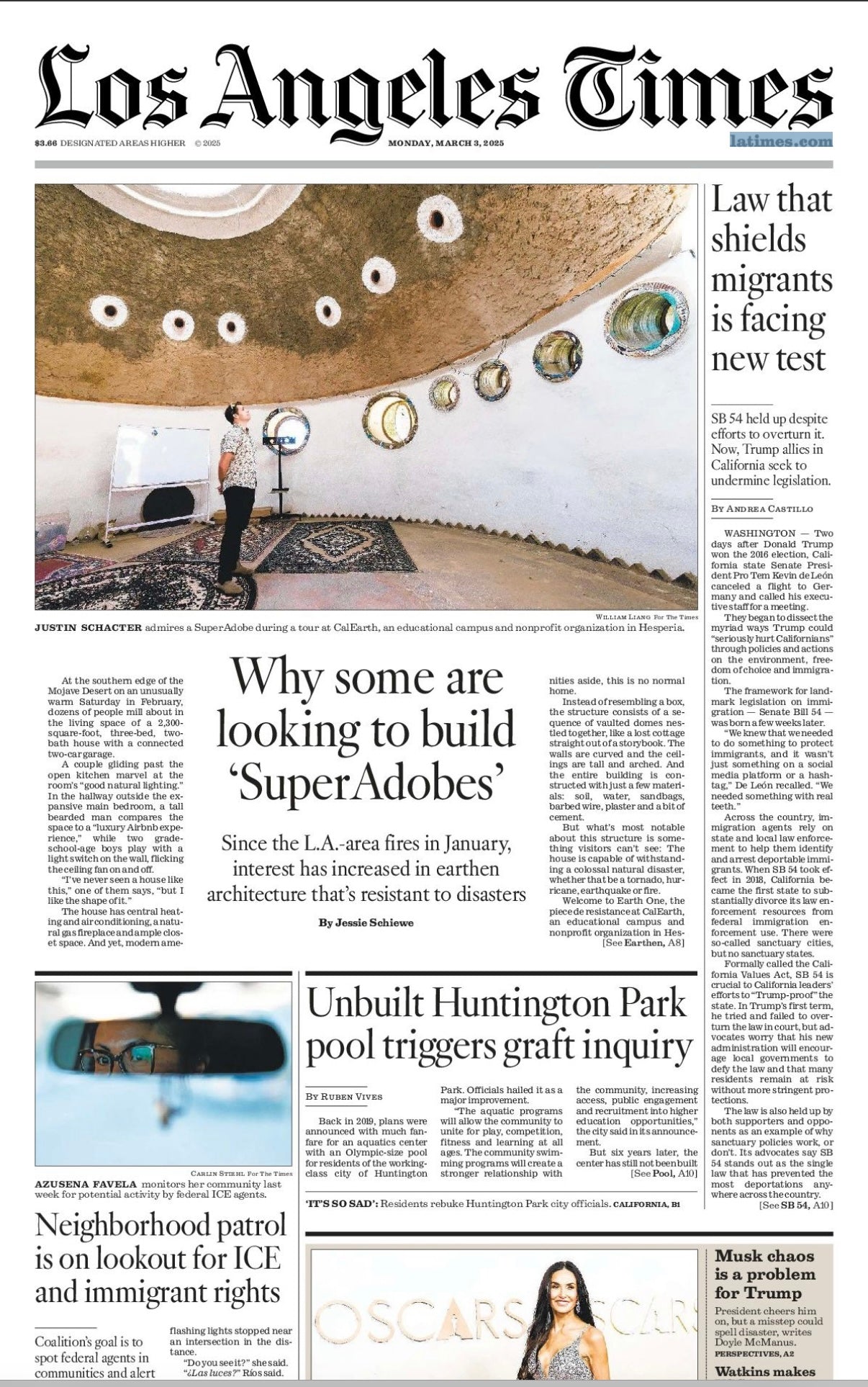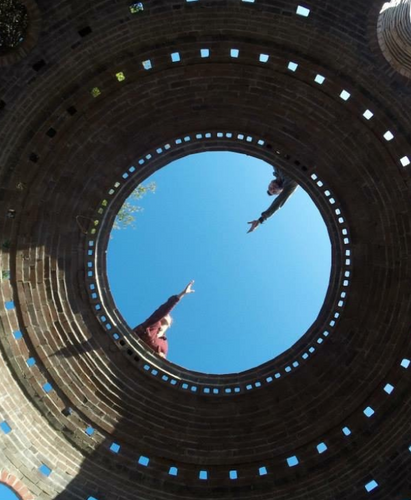
CALEARTH, CHAMPION OF INEXPENSIVE ARCHITECTURE FOR THE POOR, REOPENS THIS WEEKEND
By: Marissa Gluck - May 31, 2019
Early on a warm Saturday morning about 80 miles northeast of downtown Los Angeles, intrepid visitors sat in their cars waiting for CalEarth to open. They had come to Hesperia to see the dome-shaped structures meant to serve as housing and emergency shelters — inexpensive and easy to build architecture, perhaps for the poor or for people displaced by earthquake, wildfire, wind or flood.
Unfortunately, the research institute’s campus was closed. CalEarth had been shut down to the public since last December by the San Bernardino County Fire Department until the institute could build a fire road and make other improvements to comply with the county and city codes.

For advocates of sustainable design, the closure has quieted a longstanding voice in an increasingly important conversation. Founded in 1991 by Nader Khalili, the California Institute of Earth Art and Architecture has researched and developed solutions, including the SuperAdobe, a structure made with patented, long plastic bags filled with dirt from the building site and held in place with barbed wire. Khalili’s ultimate aim was to empower refugees and the poor to build homes using minimal materials and without the need for highly skilled practitioners such as architects, engineers and contractors.
The institute ran a robust program of apprenticeships and workshops for people interested in the technique. Alumni, dispersed across the globe, have used the SuperAdobe technique to build in places as varied as Oman, Venezuela, Japan, Hungary and Sierra Leone. While the Hesperia campus was closed, the apprenticeships and workshops continued offsite in places like Italy and Mexico.
“It verified that CalEarth is not just the campus,” said Nader’s daughter Sheefteh Khalili, who has run the institute with her brother Dastan since their father’s death in 2008. “The work has proliferated so much more expansively. The campus is just one part.”
The structures on the CalEarth campus experiment with form and materials. Doors are sometimes constructed from wood pallets, light enters through colored glass bottles inserted into walls, windows are recycled PVC pipe. One has a large domed overhang that diverts water for places prone to flooding. Another one under construction will be underground.

The result is vaulted homes that have been compared to the homesteads on the “Star Wars” desert planet of Tatooine or the cozy cupolas of J.R.R. Tolkien’s Hobbits.
“There is renewed interest in the dome. It’s a primal form that is really resonant,” said L.A. architect Daveed Kapoor. “The form is the essential shape of what homes used to be in every continent.”
Nader Khalili, who taught at the Southern California Institute of Architecture and was a visiting scientist at NASA’s Los Alamos National Laboratory, chose Hesperia because of the challenging conditions.
“The temperature is triple digits in the summer, single digits in the winter, we’re near the San Andreas fault,” Sheefteh Khalili said. The intense variation in weather serves as a stress test for the structures, which are designed to withstand extremes.
Dastan and Sheefteh have remained dedicated to advancing their father’s legacy. “His vision was so pure, so clear.” Sheefteh said. “It’s about access and education and empowerment.”
Which is why the closure has served as a crossroads for the institute.

The San Bernadino County Fire Department required CalEarth to complete a fire access road while the city of Hesperia added requirements including ADA accessible parking and a full sidewalk, curb and gutter on the east side of the campus. The road and ADA accessible parking have been completed, but the institute still needs to raise money for the sidewalk and gutter.
CalEarth launched a membership program for the first time in its history. According to Sheefteh Khalili, the remaining improvements will cost about $112,000, and CalEarth has raised $75,000 thus far. Because the fire road and ADA access was completed, CalEarth got the green light to reopen. The first open house since the closure is planned for Saturday.
The last major initiative the closure spurred is creating a set of standardized procedures for the International Code Council, an association that provides model codes for municipal governments to assess the safety and sustainability of structures around the globe.
The Khalilis hope that having a third party that can approve a procedure for testing and evaluating SuperAdobe will kickstart its adoption in the U.S., and provide a way for Hesperia and San Bernadino County to allow permitting for their buildings. For Kapoor, a standardized set of codes might make SuperAdobe more feasible in L.A., an idea he’d love to see realized. “It’s a cheap house you build yourself but each one feels like a sacred space,” he says. “It’s simultaneously sacred and profane.”





